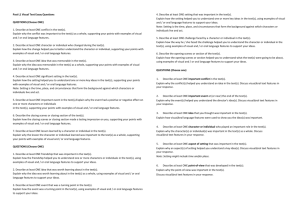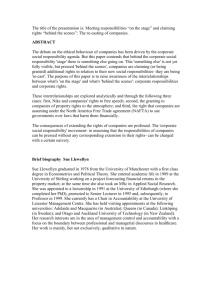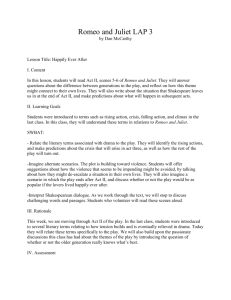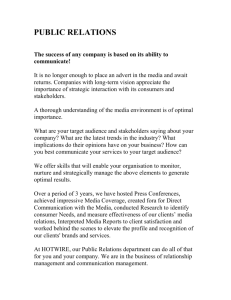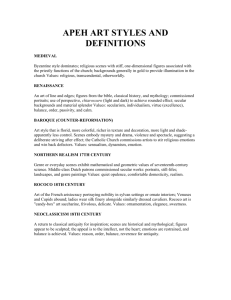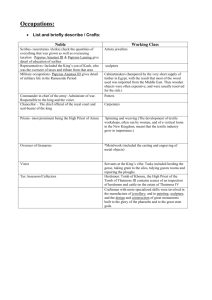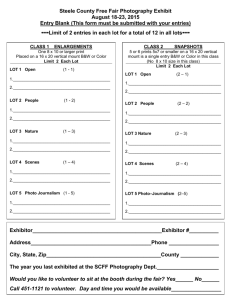Chapter 4
advertisement
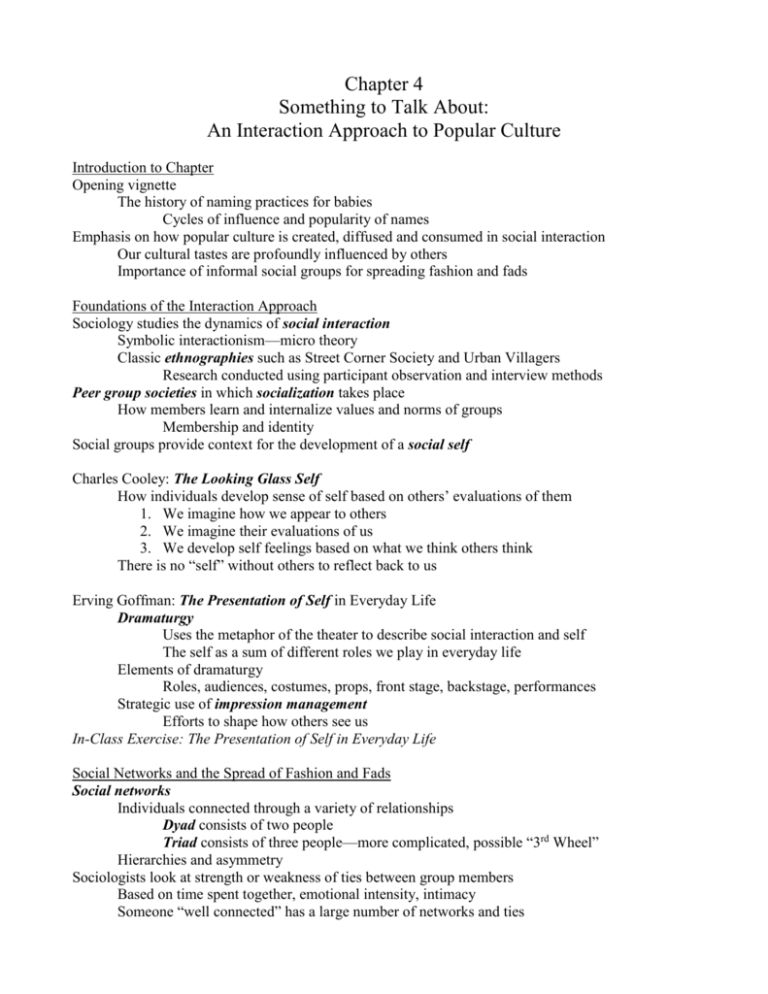
Chapter 4 Something to Talk About: An Interaction Approach to Popular Culture Introduction to Chapter Opening vignette The history of naming practices for babies Cycles of influence and popularity of names Emphasis on how popular culture is created, diffused and consumed in social interaction Our cultural tastes are profoundly influenced by others Importance of informal social groups for spreading fashion and fads Foundations of the Interaction Approach Sociology studies the dynamics of social interaction Symbolic interactionism—micro theory Classic ethnographies such as Street Corner Society and Urban Villagers Research conducted using participant observation and interview methods Peer group societies in which socialization takes place How members learn and internalize values and norms of groups Membership and identity Social groups provide context for the development of a social self Charles Cooley: The Looking Glass Self How individuals develop sense of self based on others’ evaluations of them 1. We imagine how we appear to others 2. We imagine their evaluations of us 3. We develop self feelings based on what we think others think There is no “self” without others to reflect back to us Erving Goffman: The Presentation of Self in Everyday Life Dramaturgy Uses the metaphor of the theater to describe social interaction and self The self as a sum of different roles we play in everyday life Elements of dramaturgy Roles, audiences, costumes, props, front stage, backstage, performances Strategic use of impression management Efforts to shape how others see us In-Class Exercise: The Presentation of Self in Everyday Life Social Networks and the Spread of Fashion and Fads Social networks Individuals connected through a variety of relationships Dyad consists of two people Triad consists of three people—more complicated, possible “3rd Wheel” Hierarchies and asymmetry Sociologists look at strength or weakness of ties between group members Based on time spent together, emotional intensity, intimacy Someone “well connected” has a large number of networks and ties Mark Granovetter: “The Strength of Weak Ties” What kind of connections matter most in job hunting? Weak ties have immense practical value People to whom you have strongest personal ties are alike Personal networks and peer groups are insular and homogenous Weaker ties to people you have less in common with These connections serve as a bridge spanning different networks Social networks circulate knowledge and taste in popular culture How trends, fads and fashions become popular Examples of current trends? Conduits for change are at edges of social networks Positioned to bridge social gaps separating groups Martin Gladwell: “The Tipping Point” Connectors are people who bridge a large number of discrete networks Know many total number and many different kinds of people Example of youthful characters from films: “Ferris Bueller” and “Dazed and Confused” Cultural Diffusion and Word-of-Mouth Communication The processes of interaction that facilitate diffusion Through peer groups and social circles Word of mouth communication Helps fads and fashions spread and become popular 67% of sales of consumer goods based on word of mouth Digital age provides more forums for reviews and recommendations How word of mouth or "buzz" works in movies Example of "sleeper" hits at box office Office Space, Blair Witch Project, My Big Fat Greek Wedding, Napolean Dynamite Measured by: Volume--the total number of conversations in which it is addressed Intensity--the enthusiasm expressed in conversations Dispersal--the number of social networks or communities in the conversation Duration--the amount of time the conversation lasts Movies that generate a lot of buzz do well Regardless of the content (positive or negative) of the buzz Opinion leaders Tend to be experts in a particular field (related to an occupation or full-time hobby) They draw on deep familiarity and involvement with products Make recommendations to peers Early adopters First person in a social network to try new product--"consumer pioneers" Leading by example Passive influence through conspicuous consumption Introduce new trends, fads or fashions to onlookers and bystanders Market mavens Vast knowledge about many different kinds of products Obsessive quest for information from variety of sources Strong desire to share their expertise May have greater impact on consumer tastes and decisions Collective Consumption in Subcultures, Scenes, and Social Organizations The dynamics of consuming popular culture in the context of social interaction Collective consumption Subculture A social world that stands apart from the larger society in distinctively patterned way Members invest in alternative identities, systems of belief and practices Examples of Amish, other religious sects Subcultures that appropriate materials from popular culture Can include clothes, music, dance, sports Distinguish themselves from other consumers through symbol and style Subcultures have been at the forefront of cultural reinvention Collective consumption of mass-produced and underground or alternative media 1960s --"The counterculture" or hippies 1990s--rave kids Scenes The actual places where subcultures experience shared identity through social interaction Organized according to spatial configuration Local scenes are centralized in a single venue Such as coffeehouses, clubs/bars, honky-tonks, urban street corners Provides space for public performance and exposes consumers to current trends Translocal scenes Cross-national, global diffusion of fashions and lifestyles Virtual scenes Online, Internet-based "Synthetic world" of Second Life or World of Warcraft (WOW) Subcultures and scenes are formalized into social organizations Provide stable interaction surrounding collective consumption of popular culture Popular groups include: book clubs, card-playing (poker) Conventions where fans and creators gather Example of Comic-Con (sci-fi); "Trekkers" ("Trekkies") Competitive gaming events Example of World Series of Poker, Scrabble tournaments Video: "Second Skin" The Blurry Boundary Between Marketing and Reality Marketing of media and popular culture relies heavily on social networks and buzz Stealth marketing Promotion of products at sporting events, product placement in background Reality marketing Recruit people to promote brands in the real world Confusing the difference between marking and reality KEY TERMS Social interaction Ethnographies Peer groups Socialization Social self The Looking Glass Self The Presentation of Self Dramaturgy Impression management Social networks Dyads Triads Connectors Word of mouth (or "buzz") Opinion leaders Early adopters Passive influence Conspicuous consumption Market mavens Subculture Scenes Local scenes Translocal scenes Virtual scenes Social organizations Stealth marketing Reality marketing

